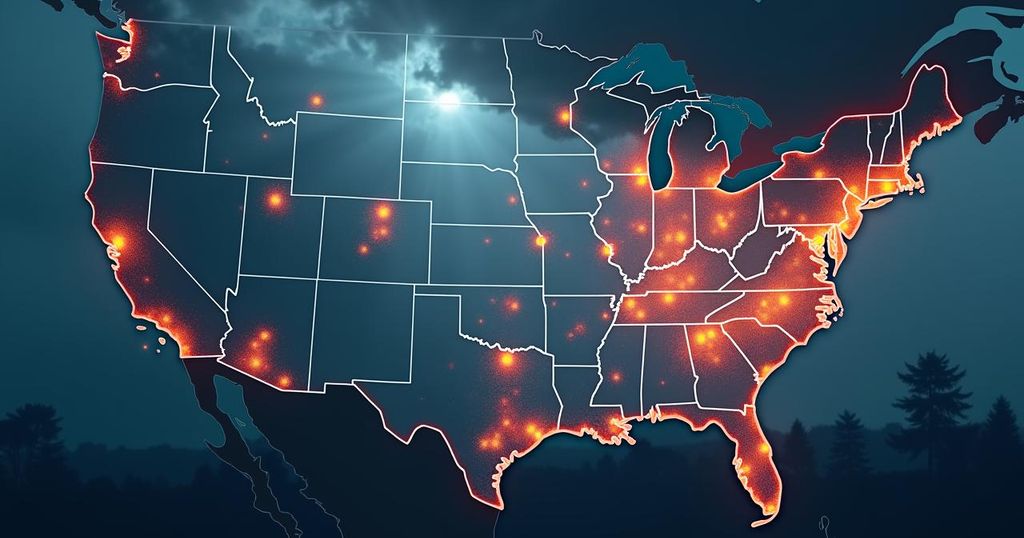U.S. Faces Looming Threat of New Tropical Storms after Hurricane Helene

The U.S. is at risk of facing new tropical storms following the devastation of Hurricane Helene, with meteorologists monitoring two significant weather systems in the Atlantic. One system has an 80 percent chance of developing into a tropical cyclone and another has a 50 percent chance of becoming a tropical depression. The National Hurricane Center warns residents, especially along the Gulf Coast, to remain alert to these developments as clean-up operations from Hurricane Helene continue.
The United States faces the potential threat of compounded tropical storms as meteorological conditions over the Atlantic intensify following the devastation wrought by Hurricane Helene. Meteorologists have identified two weather systems in the eastern tropical Atlantic, with one exhibiting a significant probability (80 percent) of evolving into a tropical cyclone within the week. Meanwhile, a secondary system located in the western Caribbean possesses a moderate (50 percent) likelihood of transforming into a tropical depression. The National Hurricane Center (NHC) advises that the Gulf Coast remain vigilant regarding the progress of this latter storm. Currently, the chief concern is the system labeled “Tropical Depression Twelve,” which may receive the name “Kirk” should it escalate to hurricane status. However, uncertainty persists regarding its potential landfall and trajectory. Following Hurricane Helene’s recent impact, which resulted in over 100 fatalities and left more than a million without power across several states, including Florida, Georgia, and the Carolinas, residents are understandably apprehensive about further storms. The Miami Herald highlighted the necessity for residents in Florida and nearby areas to remain observant of climatic developments that may deliver additional challenges. On social media, the NHC acknowledged the current conditions and potential for cyclonic activity along the Gulf of Mexico and the Caribbean, calling for ongoing monitoring of these weather patterns. Although advisories are being issued, there are presently no storm warnings activated. As the cleanup effort continues in the wake of Hurricane Helene, a Category 4 storm, families mourn their losses while preparing for the possibility of encountering more severe weather in the near future. The storms are categorized using the SAFFIR-SIMPSON Hurricane Scale, which ranges from Category 1 (winds of 74 to 95 mph) to Category 5 (winds exceeding 155 mph). The situation remains dynamic and further developments will be closely observed by meteorological authorities to ensure effective communication of risks to affected populations.
The article discusses the current meteorological threats posed to the United States following the devastating impacts of Hurricane Helene. As the region grapples with the aftermath of this powerful storm, the potential for additional tropical cyclones looms, raising concerns among residents who are still in recovery mode. The National Hurricane Center is actively monitoring multiple weather systems that could escalate into significant storms, emphasizing the importance of readiness and vigilance in the affected areas. The context of prior hurricanes and the effects of climate-related phenomena underscore the urgency of the situation, fostering heightened awareness in communities already impacted by natural disasters.
In summary, the United States faces the likelihood of encountering further tropical storms with the potential to exacerbate the already challenging recovery from Hurricane Helene. Meteorologists are monitoring multiple weather systems with significant chances of developing into cyclones, underscoring the importance of preparedness and vigilance among residents in vulnerable regions. As the community grapples with loss and begins to clean up from the devastation caused by Hurricane Helene, the possibility of additional storms requires careful attention to meteorological updates and advisories.
Original Source: www.newsweek.com






